In the studio with Mark Higgins: Mixing history with fun and vibrant colors


Artist Mark Lewis Higgins’ studio is like a portal into different countries and centuries. Enter one door and you’re in The Last Emperor-era China, with its rich reds, curlicued opium bed and brocaded cloaks.
Behind Door No. 2 is Venice and Istanbul, the walls an azure that evokes the Blue Mosque, a Venetian duke depicted in a Higgins painting above the bed and his peaked hat on a lampstand.
Go to the loo and you are somehow transported to Provence, with lavender blooming on the counter and a French candle scenting the air.
Antiques, curios and books mingle on every available surface, back-dropped by walls tinted in bright primary colors. It’s a heady, opulent mix — one that would be a hot mess in anyone but Higgins’ expert hands.
“I have an allergy to white walls,” he says. “I don’t like seeing white walls anywhere except in the kitchen. I just find it boring. I love the idea that anywhere you look there’s something to look at, and a story.”
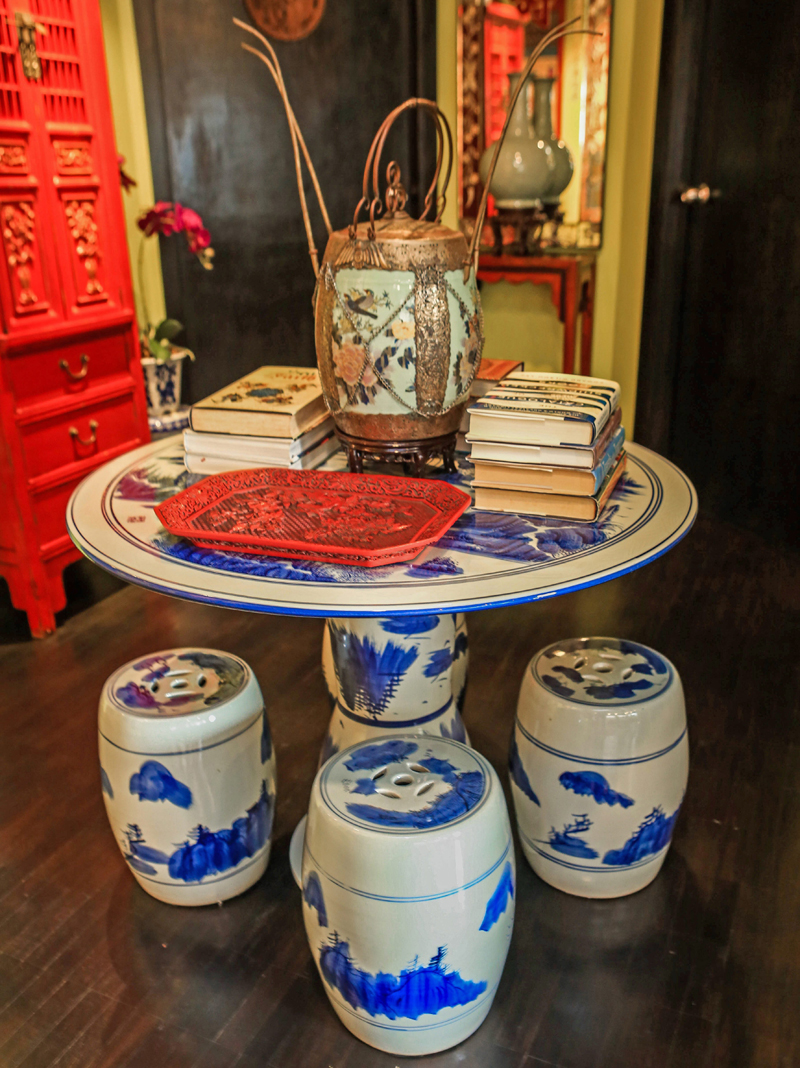
“I wanted a lot of blue and white porcelain around so I bought this table and my sister said, ‘Oh, my God it’s so tacky,’” Higgins says. On top are all the books he can’t fit on his night table.
The artist, who’s exhibited in galleries from New York to Manila, authored two books (one about his mother, iconic fashion designer Slim: Salvacion Lim Higgins and the more recent Fashionable Filipinas: An Evolution of the Philippine National Dress in Photographs 1860-1960), and is a fashion designer himself, filters objects with an eye for the exquisite. For example, chartreuse wouldn’t be most people’s first pick for a living-room wall color, but instead of the visual assault you might expect, Higgins makes it work.
“I was working on the series of paintings that I’d just showed (“Gold In Our Veins” at the Ayala Museum last February), and the inspiration was the ancient history of Southeast Asia, so it was all these references to spices, porcelain and things like that, and I was using the brightest color palette ever,” Mark explains. “I’d never used colors like that. So when I was fixing this apartment, I wanted it to be a reflection of my mind at the time, and this particular yellow-green — I wanted something really happy. Also, because you see the greenery outside, I wanted to bring that in.”
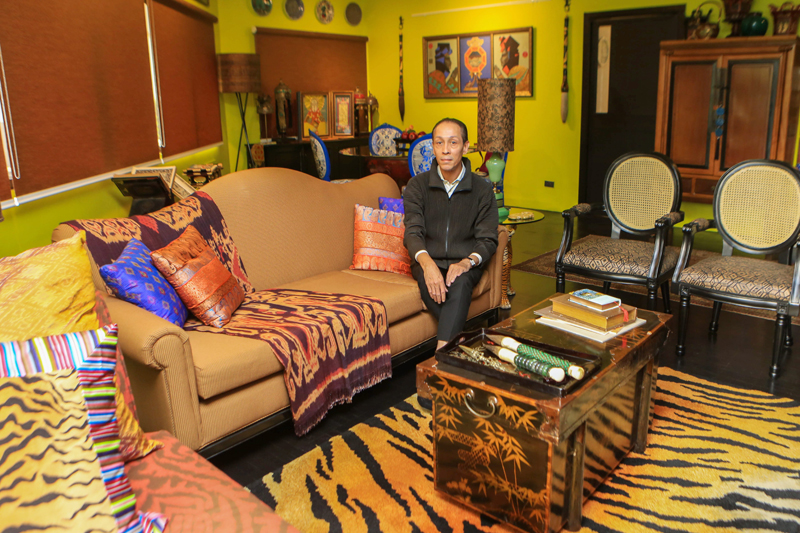
“I’ve always been drawn to things I think are rare and exotic, whether it’s hand-woven textiles from Benares or Chinese porcelain paintbrushes,” he says. “I don’t do my personal spaces to impress anybody; it’s for my own visual pleasure.”
The Legazpi Village apartment where Mark entertains visitors and hangs his paintings used to belong to his dad, Hubert Lewis Higgins. After his mother Slim died in 1990, his dad insisted on getting his own place. “He’s a western dad,” Mark says about his Irish father. “People are always like, ‘Your dad didn’t live with you?’ But my dad said, ‘You guys have your own lives so I’m going to get a condo.’”
Today the condo looks nothing like when his father lived there. Though he says some of the furnishings don’t conform to his taste, Mark filled the three-bedroom with pieces he’d inherited from his family. “We had this whole generation of my mom’s younger siblings who eventually passed away, and there was this enormous house full of stuff that we had to clear,” he recalls. “So a lot of it I put here because at least there would be stuff in the apartment. I didn’t have to start from zero.”
Cinematic interior decor
Pieces like the red Chinese cabinets in the sala came from his aunt’s house. “It’s not stuff I would buy, but I thought, I’ll just put it there and have fun.” The blue-and-white chairs in the dining area “are those typical Betis, Pampanga, dark-wood things, so I just made them fun. I just decided to make this apartment fun,” he reiterates.
Any gaps in the interior décor he filled with objects he’s gleaned from a lifetime of collecting; living abroad in cities like Rome, New York and Hong Kong, and shopping in the flea markets and bazaars of Istanbul, Paris, and Tokyo.

Venice meets Istanbul: Higgins’ painting of a Venetian duke hangs over the bed; an actual doge’s hat is mounted on a lampstand in the room.
His dad’s old master bedroom is now a red room that reminds me not only of The Last Emperor but also the Wong Kar Wai movie In the Mood for Love. “The opium bed is from Java but someone happened to be selling it here,” Higgins says. “The little blue-and-white statues were very inexpensive in Hong Kong. Those plates are from Landmark; the rugs are from SM.”
A yellow Chinese costume he had custom-made in Xian 20 years ago is now framed and hung on the wall. “I said, okay, this is looking very Last Emperor already, so I wanted to relax the Chinese theme by putting the abaca rug so that it looks more Southeast Asian.”
Mark is also fond of repurposing old furniture so that they gain new life, like the striking pair of lamps he fashioned from rusty old brass candlesticks. “I was about to throw them out, but thought the height is perfect for the bed, so I had Palayan make a base, and the lampshade is the transparent curtain version of the bed fabric.”
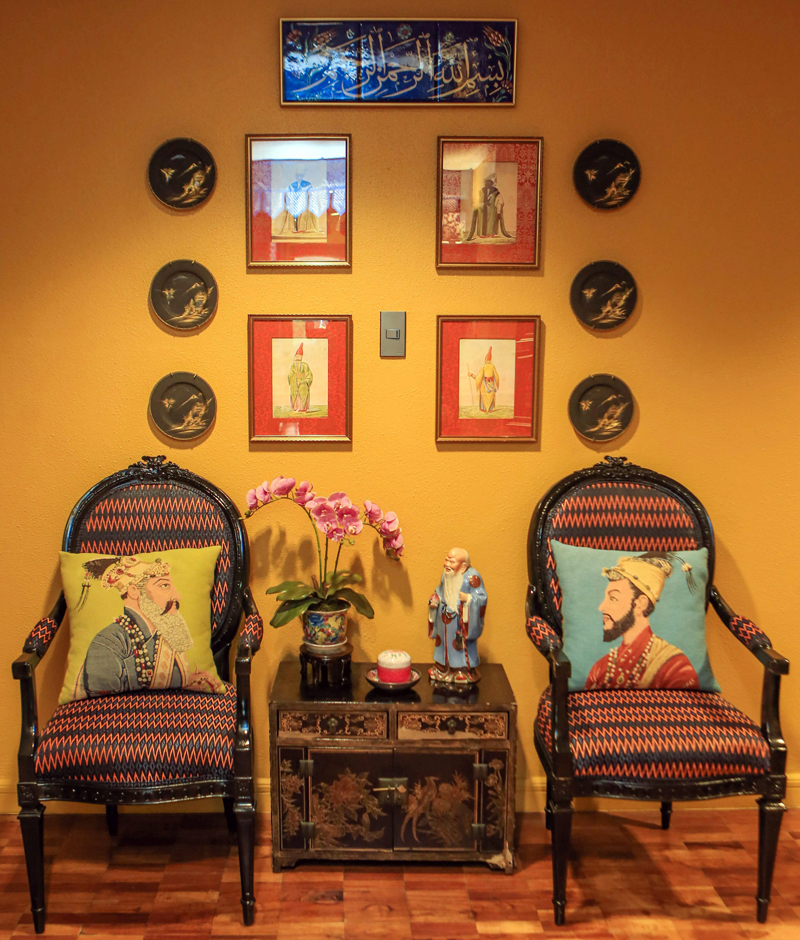
Higgins decorated even the foyer outside his studio: “I was supposed to leave it white, but I begged the condo manager, ‘Please, I can’t stand white,’ so I gave her a swatch of the ocher. She said, ‘This is not the color we agreed on, pero alam mo? Maganda.’”
He also reupholstered an old chair with Chinese brocade and trimmed it with an antique horse bridle he’d acquired in Istanbul. “Nothing here has monetary value but they all have stories behind them,” he says.
His knack for interior design and putting objects together to create visually compelling tableaus didn’t escape the curators of Ayala Museum. “When they came to look at the framed paintings for the exhibit, they said, ‘Oh, my God, we want the exhibit to look like your apartment,” laughs Mark. “That became the running joke. It was really mixing all the elements of Southeast Asia up, which I did here. I’m not an interior decorator, so all my references are from an artist’s or a historical perspective.”
‘My mom didn’t like old stuff’
Growing up, Slim Higgins took Mark shopping with her constantly. “My mom was not into interiors; she took me shopping for fabrics everywhere we went,” he says.
He’s also the antique collector in the family. The Lims weren’t fond of antiques, perhaps because they possessed secret histories that were impersonal, and possibly negative. “The only antiques my parents owned were the things given to them,” Mark says. “My mom didn’t like old stuff.”
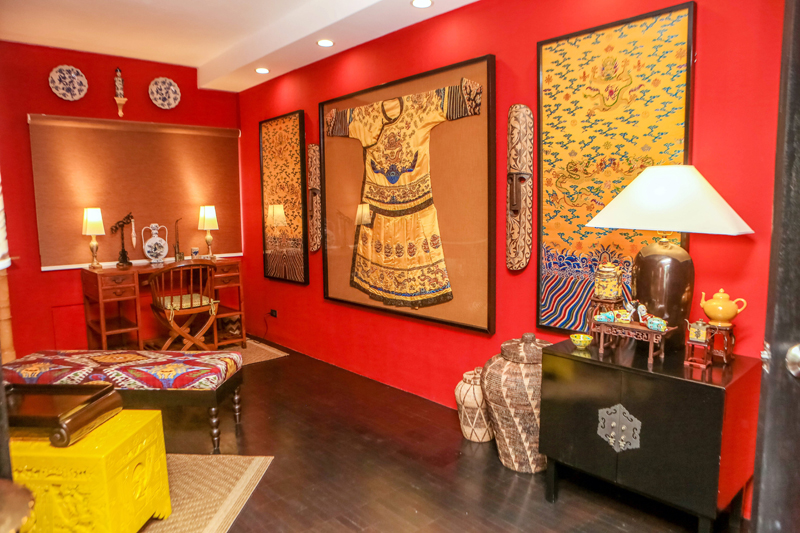
Framed on the wall of the master bedroom are fabrics and a Chinese costume Higgins had custom-made in Xian. The rug he bought at SM.
The most literal clues to Higgins’ vocation are the paintbrushes — both gigantic and small — that hang everywhere in the studio. “I collect these porcelain brushes all around,” he says. “There’s an art supply store in Hong Kong that’s been there for more than 30 years. I went in there when I was 11 years old and I’ve been buying art supplies from them since.”
Mark started getting into history at around the same age, after buying and reading his first book, The Tomb of Tutankhamun. “My mom was convinced I was an old soul because I was reading books on history ever since I was third or fourth grade.”
Exposure to the fashion industry also made him a snappy dresser when he was a teenager. “I was wearing Giorgio Armani and Versace when I was 14,” he recalls. “My classmates had no clue who those people were. I paid for it with my allowance. My mom used to say, ‘Do other kids your age dress like that?’”
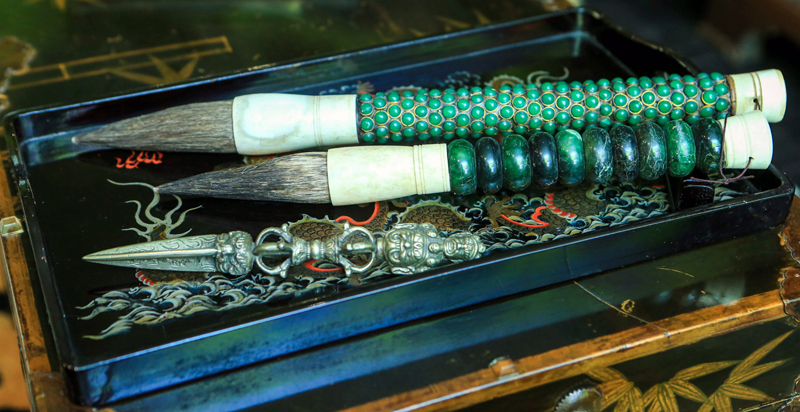
Tools of the trade: Higgins collects paintbrushes from all over the world and uses them as decorative items.
When it came time to go to college, Mark took up fine arts in Canada before studying fashion design at Parsons in New York. “I was always painting but decided to do fashion because I thought, what living are you going to make being a painter? I thought fashion was more feasible as a career, so I did that for a while and worked with my mom, but then gravitated back to painting because it’s what I really love the most.”
He now runs Slim’s Fashion and Arts School in Makati along with his sister Sandy. “We didn’t have the heart to close the school because it has helped so many people,” Mark says. “If you think about the percentage of successful designers in Philippine fashion, how many of them came from that school? I’m talking about early generations like Oskar Peralta and Joe Salazar to Michael Cinco, Joey Samson, and Cesar Gaupo. I don’t think it’s something we can run forever. And to be an educator is like being a nun or a priest: it’s a calling.”
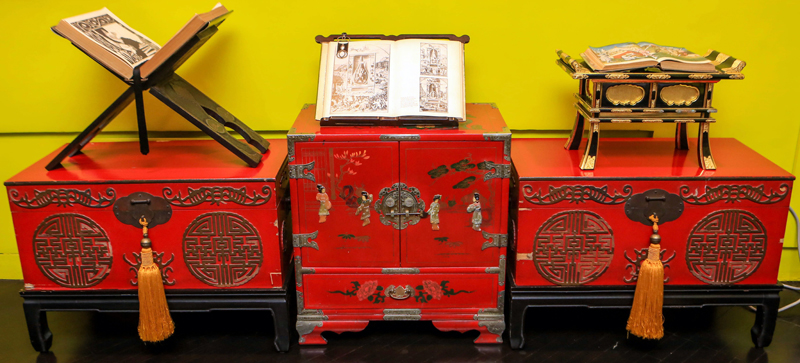
On top of his aunt’s red Chinese cabinets Higgins placed three bookstands: “The one on the left is a Koran stand I bought in Istanbul, the middle one is a Chinese bookstand I got years later, and two years ago in Tokyo the black and gold one is where the priests put their prayers, the sutras.”
Though he lives with Sandy in a house in San Lorenzo Village that is also “eclectic” but slightly more restrained (the walls are taupe), Mark plans to turn one of the rooms of the Legazpi Village studio into a place where he can actually paint. “I’m going to start spending time here because I paint very late at night,” he says.
He plans to continue adding to his “Gold In Our Veins” series because he had such fun doing it, and is also thinking of what the next step might be.
“It takes me years to put together a show,” he admits. “‘Gold In Our Veins’ was three years of work. If I had my wish, that warehouse would travel. It would tour the nation, the region, and the West, because everyone would get something different out of it.”
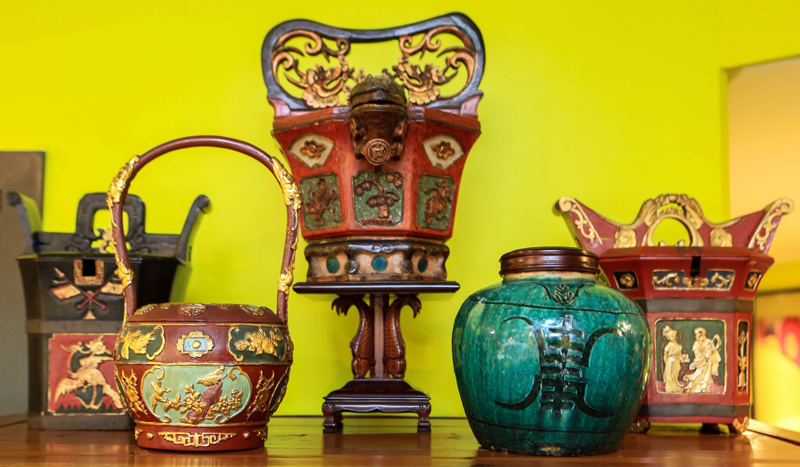
Time for tea: On top of a cabinet is Higgins’ tea caddy collection
On the way out, a row of plates on the wall catches my eye, and I ask Mark where he got them.
“Aren’t they hysterical?” he replies. “It’s Bollywood Fornasetti in India. I think I saw them in Chennai. I love them because, ultimately, I think the point of this place is, ‘lighten up.’”
* * *
Follow the author on Instagram @theresejamoragarceau.



















